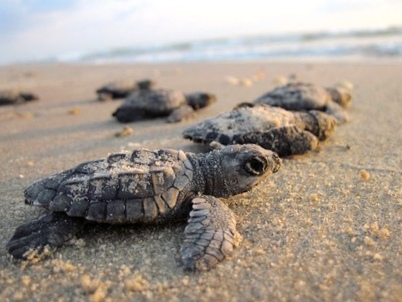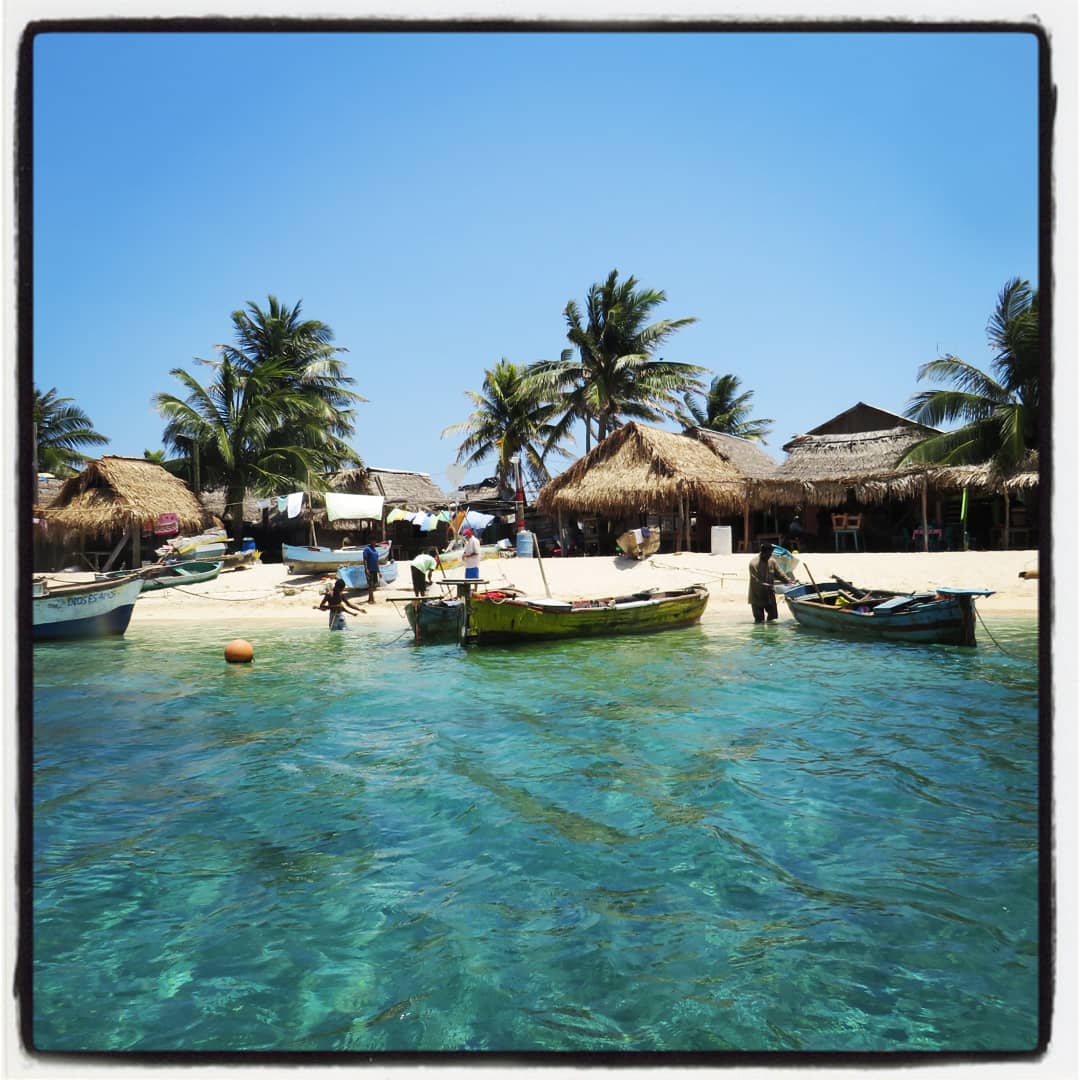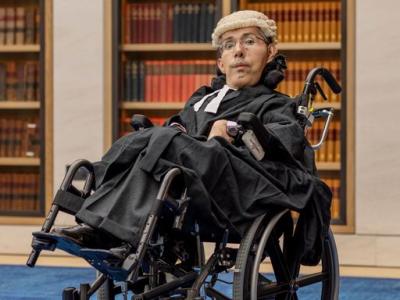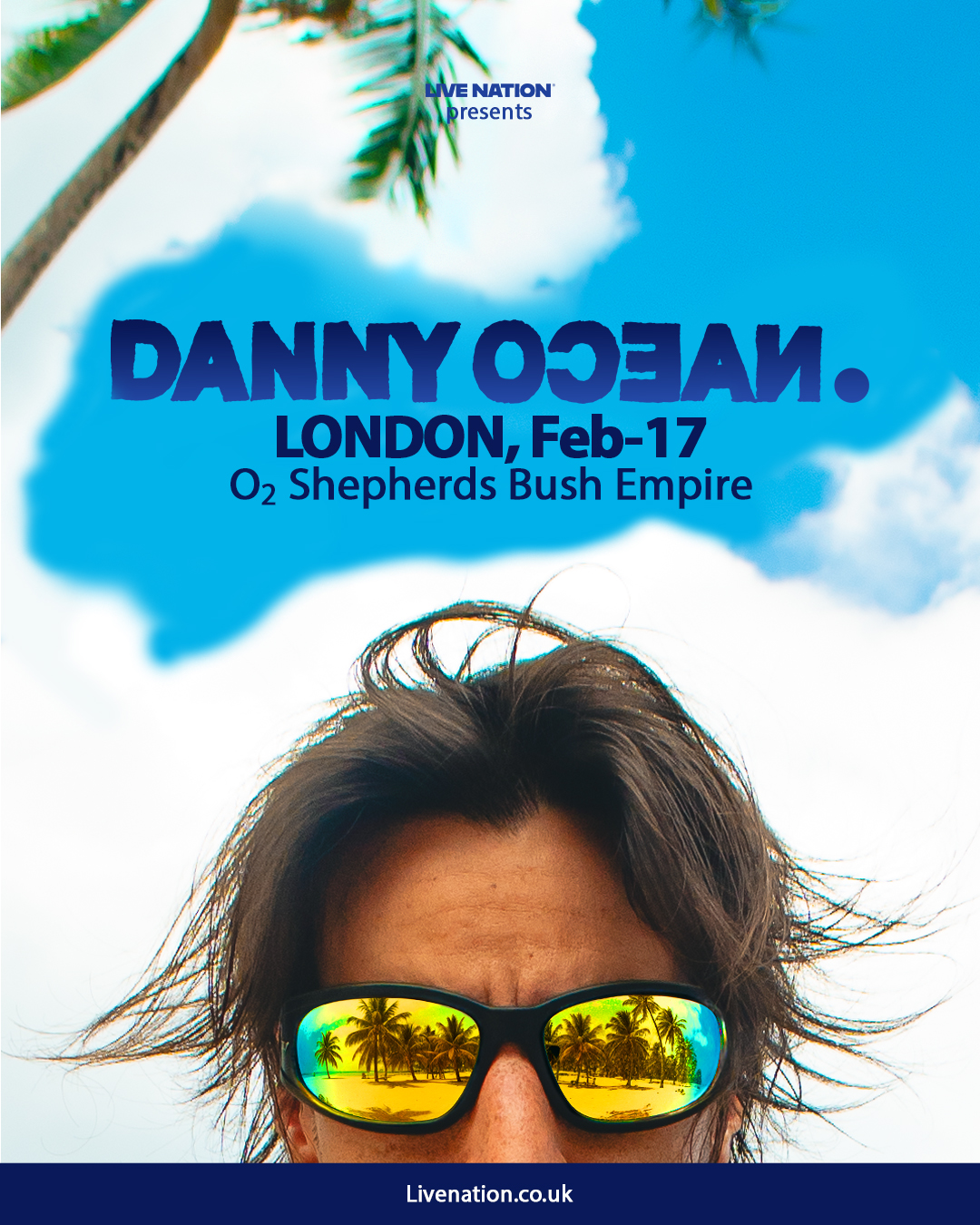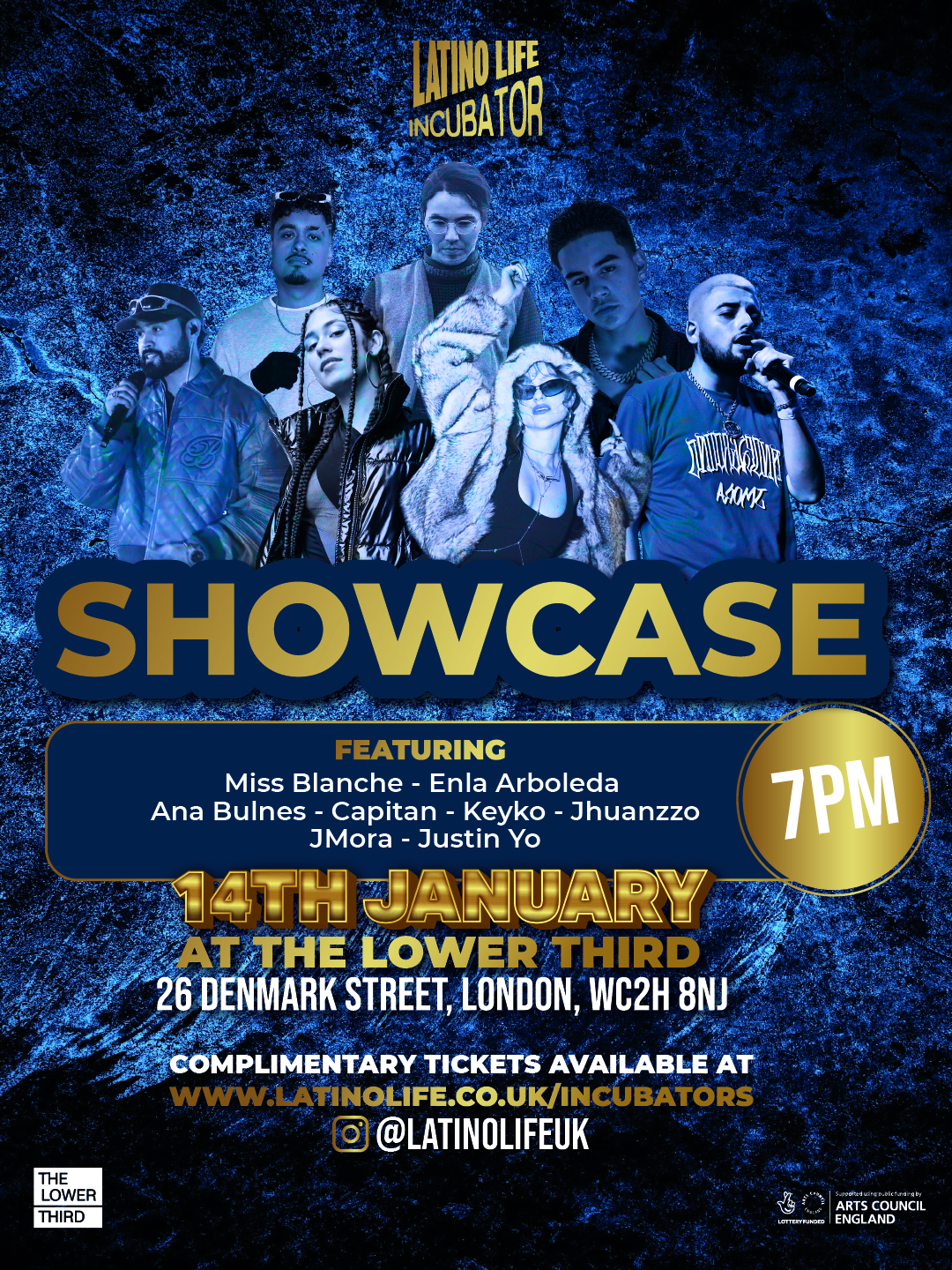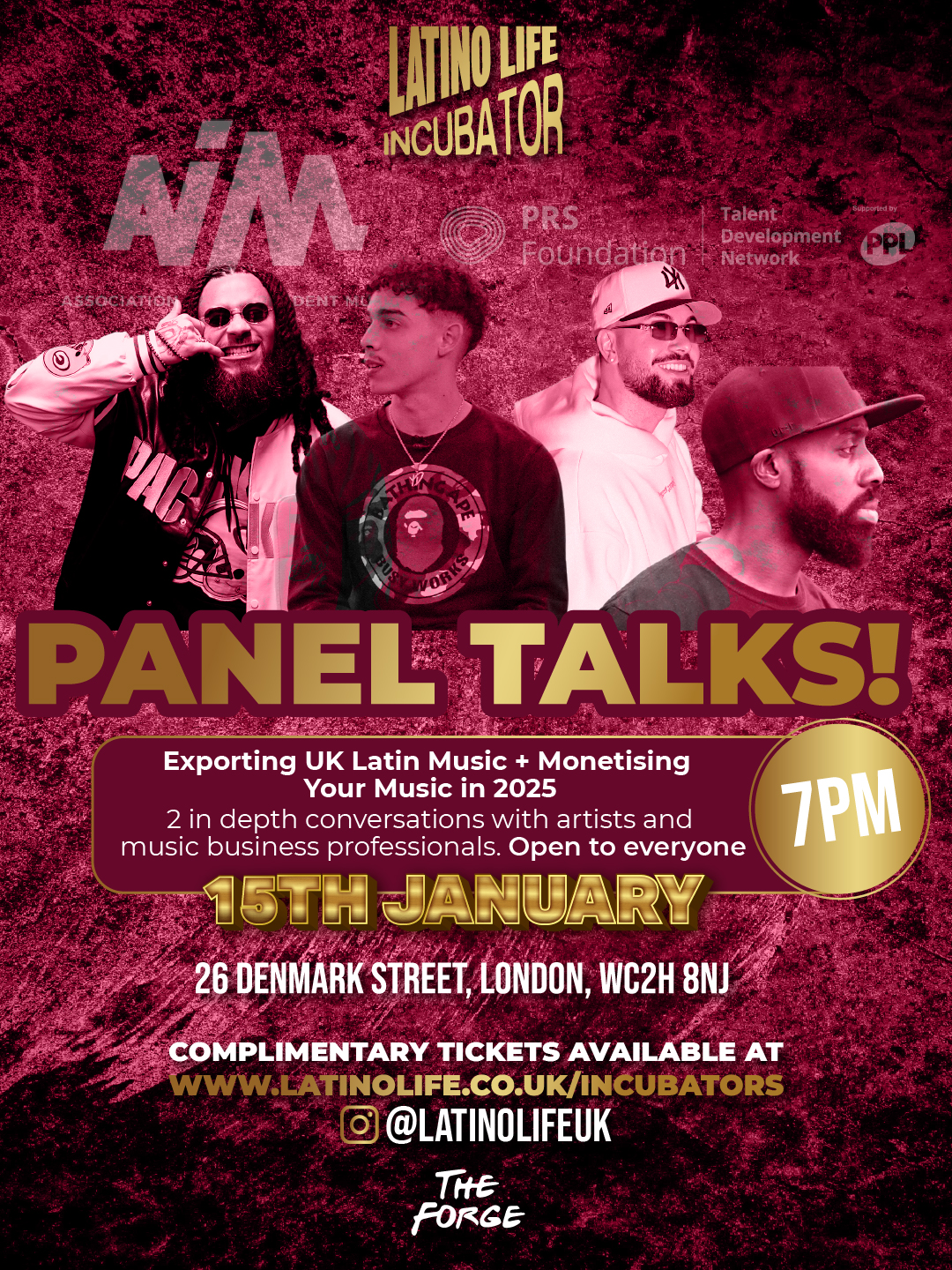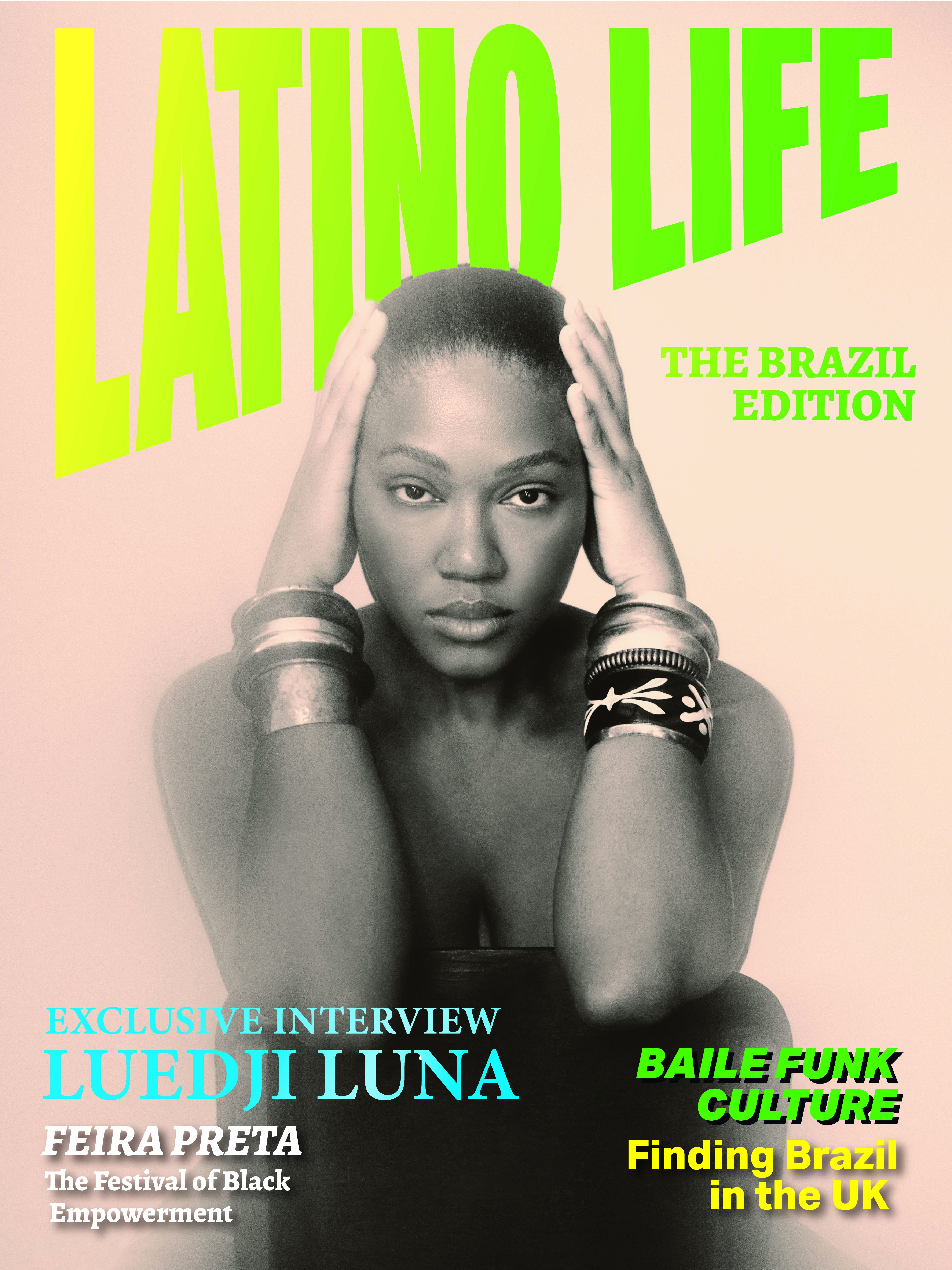Conch Soup and Garífuna Tales
With its teeming tropical fish in bright neon colours, exuberant coral reefs stretching for miles, and well-priced diving courses it’s no surprise that most people come to the Honduran island of Roatán for the incredible undersea experiences to be had here. But if you want history, culture and an authentic taste of the Caribbean you need to seek out the island’s Garífuna (Ga-RI-foo-nah) community in the north of the island at Punta Gorda.
A unique Afro-Caribbean culture with an incredible history, the Garífuna, or Garinagu people trace their roots back to 1635 when shipwrecked African slaves established a community on the island of St Vincent. Taking on the customs and language of the indigenous Arawaks and Caribs, they came to be known as the Black Caribs and fiercely fought against the encroachments of the British who saw their very existence as a threat to the sugar-plantation slave economy in the Caribbean.
“The story of the Garinagu in Central America starts here in Punta Gorda,”, says Karla Martinez, the owner of Yurumei's Sports Bar as we look out to sea from the deck of her popular restauant at the back overlooking a long stretch of sandy beach. “On the 12th of April 1797 the British forcibly shipped us here from the island of St Vincent and it was from here in Punta Gorda we went first to the Honduran mainland and then on to Belize, Guatemala, and Nicaragua. We are spread far and wide but our language, music and food keeps us united. Keeps us Garífuna.”
A one woman ambassador for all things Garífuna, Karla has decorated the tables at her popular seafood restaurant with Garífuna words and phrases.
“We have to do what we can. UNESCO declared the language, dance and music of the Garífuna a Masterpiece of the Oral and Intangible Heritage of Humanity in 2001 but we have to preserve this proud tradition ourselves, every day,” says Karla. “and it starts with our tasty traditional recipes”.
The must-have dish at Yurumei’s is sopa de caracol, a soup so good it has a song named after it. Honduran group Banda Blanca released the song Sopa de Caracol in 1991 and it quickly launched a dance craze around Latin America with its catchy chorus: “Watanegui consup, yupipati, yupipati”.
“That song is only only partly Garífuna,” says Karla, “if you want to hear real punta rock look for songs by Andy Palacios from Belize or Aurelio Martinez from here in Honduras”.
Karla brings out a creamy soup of coconut milk, fish, conch, and yuca that is served in the bowl with a ball of mashed plantain called machuca. An emblematic dish of the Garífuna, machuca is similar to other mashed plantain dishes from the Caribbean, like mangú from the Dominican Republic, mofongo from Puerto Rico, and fufu de plátano from Cuba.
The rich seafood soup was the perfect pick-me-up after a morning snorkeling in the magical MesoAmerican Reef, but Karla won't let me go without sampling the local hooch called gifiti, a potent cocktail of strong cane spirit and medicinal herbs that brings a glow to my cheeks, a smile to my lips and a WTF to my tastebuds.
With a warm embrace and a hearty entreaty to tell the world about the Garífuna, Karla sends me off to experience the punta drum dancing down the road.
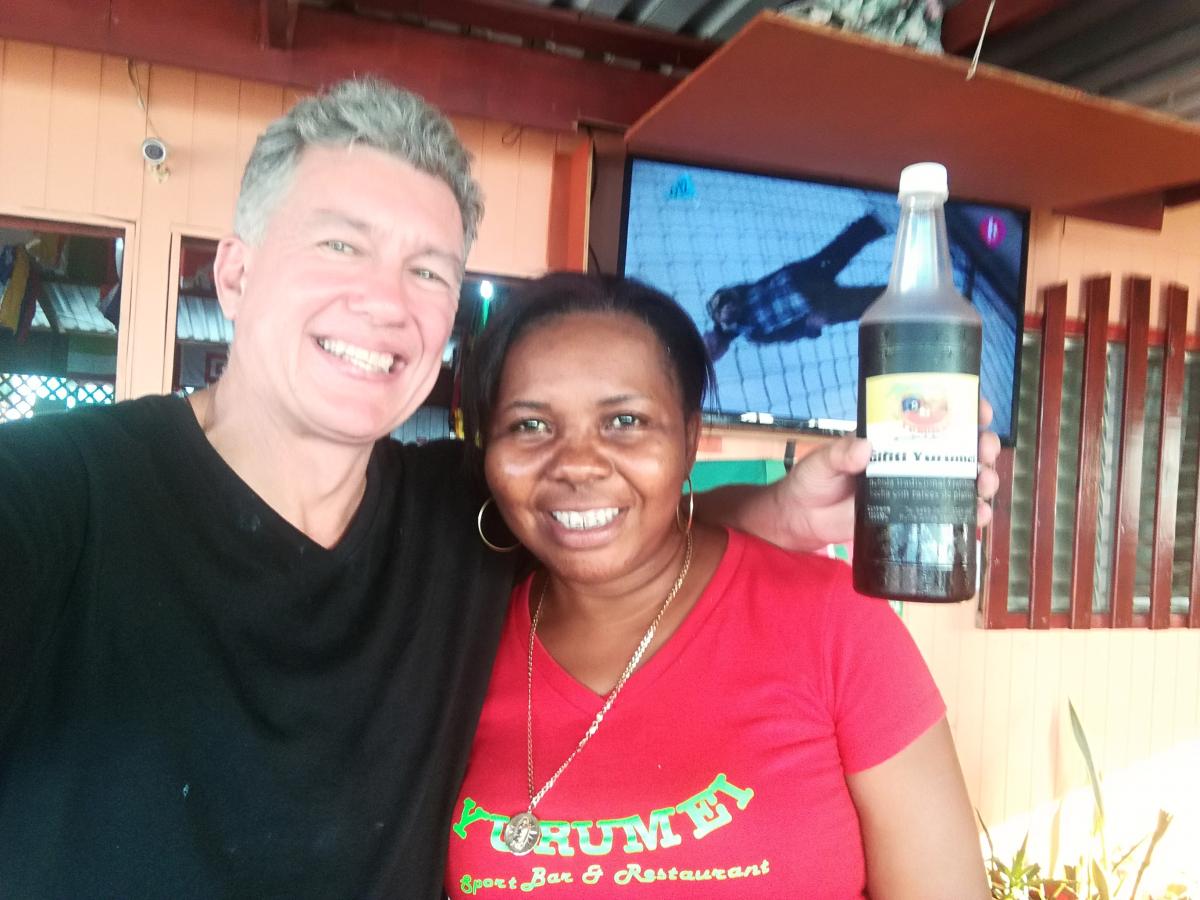
Punta Rock at Punta Gorda
Forget twerking, the Garifuna community of Punta Gorda has taken the ancient art of booty-shaking to the next level. You only have to hear the infectious taka-ta taka-ta taka-ta of the Afro-Caribbean drums to understand why hips swing when this music starts.
Every Sunday afternoon a large group of Garífuna drummers gather to play a free concert at the outdoor palapa in front of Perla's Restaurant. While the musicians might perform a slow Garífuna parranda on accoustic guitar to get things going, the main rhythm for dancing is punta rock, a modern fusion of traditional wooden drums, maracas, and conch trumpets accompanied by jangly riffs on electric guitar.
It’s a real community event, and while foreign tourists have turned up to enjoy the free show this is about the Garífuna proudly embracing their identity and showing off their dance skills.
Anyone who feels the urge can get up and dance, and a succession of women and men take turns to shimmy and shake their hips as the drummers thump out a fast beat, the crowd roaring with approval for the best dancers and bursting into laughter at the more bizarre moves busted by some of the younger guys.
A slim girl in braids wearing a long rasta dress with the face of Bob Marley on it is a particular favourite with the crowd as she spins and twerks in bare feet in front of the drummers.
The spirit is good natured and friendly and the drummers take breaks between sets to wipe off the sweat and swig bottles of white rum or gifiti.
“This is nothing,” says a guy called Joseph playing maracas when I tell him how cool it is to watch punta rock being performed live like this, “you need to come on 12 April, that’s the party, man. A big, big party to celebrate the arrival. The day we came to Punta Gorda back in history. Everybody dances on 12 April.”
With so much more of the forested island to explore, I wish I could have stayed in Roatán longer but there were plenty more adventures to be had in Honduras and I was keen to see the Hog Islands or Cayos Cochinos, the closest of the Bay Islands to the mainland.
The ferry from Roatán to La Ceiba on the mainland takes about an hour and costs $30. Sitting on a plastic bench seat at the back of the boat, it was hardly a cruise, but the views of the high, tree-covered slopes of the Nombre de Dios mountains as we came in to the port city of La Ceiba were magical all the same.
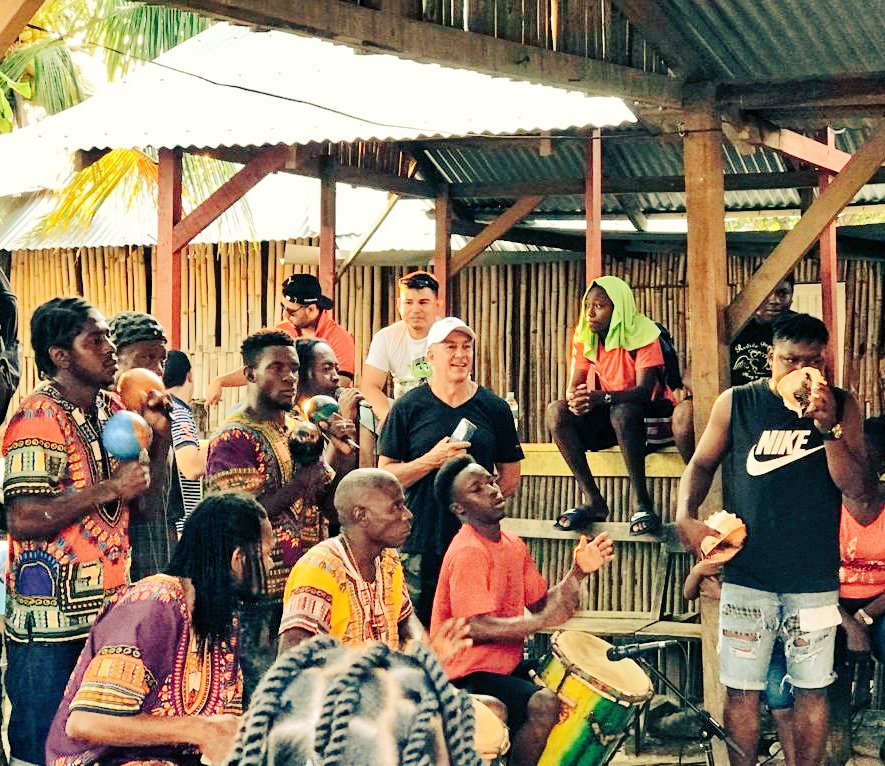
Castaway Fantasies in Cayos Cochinos
A bumpy boat ride from the beach at the Palma Real Beach Resort near La Ceiba took us across choppy waves for 40 minutes to El Timon, a sandy island no bigger than a pub car park with a single palm tree and a hut made of palm leaves. It was like some Robinson Crusoe hideaway, and the perfect entry to the Cayos Cochinos, an archipelago of 13 coral cays and two forested islands located just just 17 km from the mainland. The most remote and protected part of the Bay Islands, the archipelago was declared a marine reserve in 1994. A ban on commercial fishing protects a 460-sq km area around this important reef system, part of the Mesoamerican Barrier Reef, which is closely monitored by the Honduras Coral Reef Foundation (HCRF).
Legend has it that these Hog Islands, as they appear on ancient maps, were so named because they were populated with pigs by the 17th century Welsh pirate Sir Henry Morgan so his buccaneers would always have food to go with their grog when they hid out here.
Nowadays, visitors come to dive, swim and snorkel in the pristine waters, and explore the forests of the smaller island, Cayo Menor, in search of the pink boa, a small endemic snake.
We stop the boat just off one of the larger islands and snorkel in to shore. The water is warm and the corals are vibrant and alive with psychedelic colour. Schools of small bright fish dart past sponges and gently waving sea fans. The snorkeling in Roatán is exceptional but the Cayos Cochinos is next level, a Blue Lagoon experience.
“We always try and visit three or four cayos on a day trip but the Garífuna island of Chachahuate II is the highlight” says Gerson Aldair, my guide from the boat company Tourist Options.
We head over to Chachahuate II for lunch. A small strip of sand covered in ramshackle wooden houses, the island is home to a community of Garífuna fishermen and their families, perhaps a hundred people in total.
“It’s hard to say how many there are. People come and go from Sambo Creek on the mainland”, says the headman Ronan, as he brings over plates of red snapper, rice and plantains. “We’re happy here, on our island. No stress.”
In the shade of the shacks, one girl weaves another girl’s braids, a couple of young kids giggle as they swing in hammocks, a group of fishermen sip slowly on bottles of Salvavida beer and swap stories, there’s no hurry on Chachahuate.
Gerson asks me if I noticed all the foreigners staying at the Palma Real resort back on the mainland. “They’re the production crew for a Spanish version of Survivor that is being filmed here,” he says. The Italians film a similar reality show here too called Isola dei Famosi, featuring a host of Italian celebrities, Gerson adds.
The celebrities suffer their reality-show hardships on a few small bays on the main islands and filming is restricted in order to protect the archipelago, which is good news, as Cayos Cochinos is the Caribbean paradise you dream about on rainy days in London, a place you wish will never change and hope to return to soon.
On the bumpy ride back to the mainland we get a sense of how green Honduras is, the densely forested ridge of the Nombre de Dios range stretching for miles in either direction. Dominating the view is the jutting triangle of Pico Bonito at 2,435 meters above sea level, a landmark visible from the Bay Islands that points us to our next adventure in the Pico Bonito National Park.
Whitewater rafting on the Rio Cangrejal
Surrounded by the sounds of the jungle and the gurgling of the river I surrender to the current and go gently down the first set of rapids feet first as instructed. Above me, in the high canopy to the left a keel-billed toucan takes a short flight from one liana-clad tree to another. To the right, an electric blue morpho butterfly flutters erratically along the bank. The water is cool and the sun is hot and the river runs slow enough for me to luxuriate in the tropical wonders of the dense forest that rises up and away from both banks. Climbing up a boulder as big as a barn I am rewarded with a spectacular view down this stone-strewn river valley that has made a name for itself as the best place to go whitewater rafting in Central America. It is hard to imagine that we are only 40 minutes away from the port city of La Ceiba and the Caribbean beach where I had scrambled eggs and fried plantains for breakfast.
I came expecting exertion – and there are few activities that can give you as much adrenaline-pumping action as whitewater rafting - but the first part of our visit to to the jungle is more like meditation as we clamber over rocks and swim our way upriver and then float back down in the tea-coloured water.
We’re at the Cangrejal rafting camp of Moskitia Ecoaventuras run by the conservationist and survival expert Jorge Salaverri who learnt his bushcraft and love of the rainforest in the Honduran special forces. Salaverri is the real deal. In 2013 he led Ray Mears and Trainspotting star Ewan McGregor on a rafting and trekking expedition to ancient pre-Columbian ruins deep in Moskitia, and he taught Bear Grylls the basics of living off the land in the Costa Rican episode of Man vs Wild.
As we munch on fresh pineapple and mangos, Jorge explains that the forests of Central America are as important to the future survival of the planet as the Amazon rainforest.
“We have this hugely diverse and pristine ecosystem in Central America, a corridor of biodiversity that runs from Mexico to South America and we have to preserve it,” he says. “Ecotourism is an important way to do that, and that’s why we offer people the chance to experience first-hand this magical wilderness here in the Parque Nacional Pico Bonito and on extended trips into Moskitia.”
Fruit break over, we get into the rubber rafts for a quick lesson in rafting these Grade III and IV waters. The exhilarating descent of the river starts with the first set of rapids that send us sideways, drops us down backwards with a bump, and soaks us in foam. It’s fast, furious, and loads of fun and when it’s over we all want to do it again.
That evening on the seafront in La Ceiba, as we stroll along the jetty where local fishermen cast lines in the hope of a catch, we meet John Dupuis, a Mexican who fell in love with Honduras and now runs Villa Soledad a boutique bed and breakfast by the entrance to the Pico Bonito National Park.
“This jetty was once the most important place in Honduras. Millions of bananas were exported to the US from here by the banana companies and it was the backbone of the economy. The American writer O. Henry even coined the term Banana Republic in relation to Honduras,” he says.
Pointing out the end of the jetty, which has collapsed into the sea, John says that Honduras still exports plenty of bananas but tourism is playing a greater role in the economy.
“Carefully managed ecotourism will help to protect the country’s natural treasures, benefit the environment and bring employment. It’s all here: the Caribbean islands, national parks, stunning waterfalls, exotic birds, and the adventure” he says. “Central America is packed with adventure”.
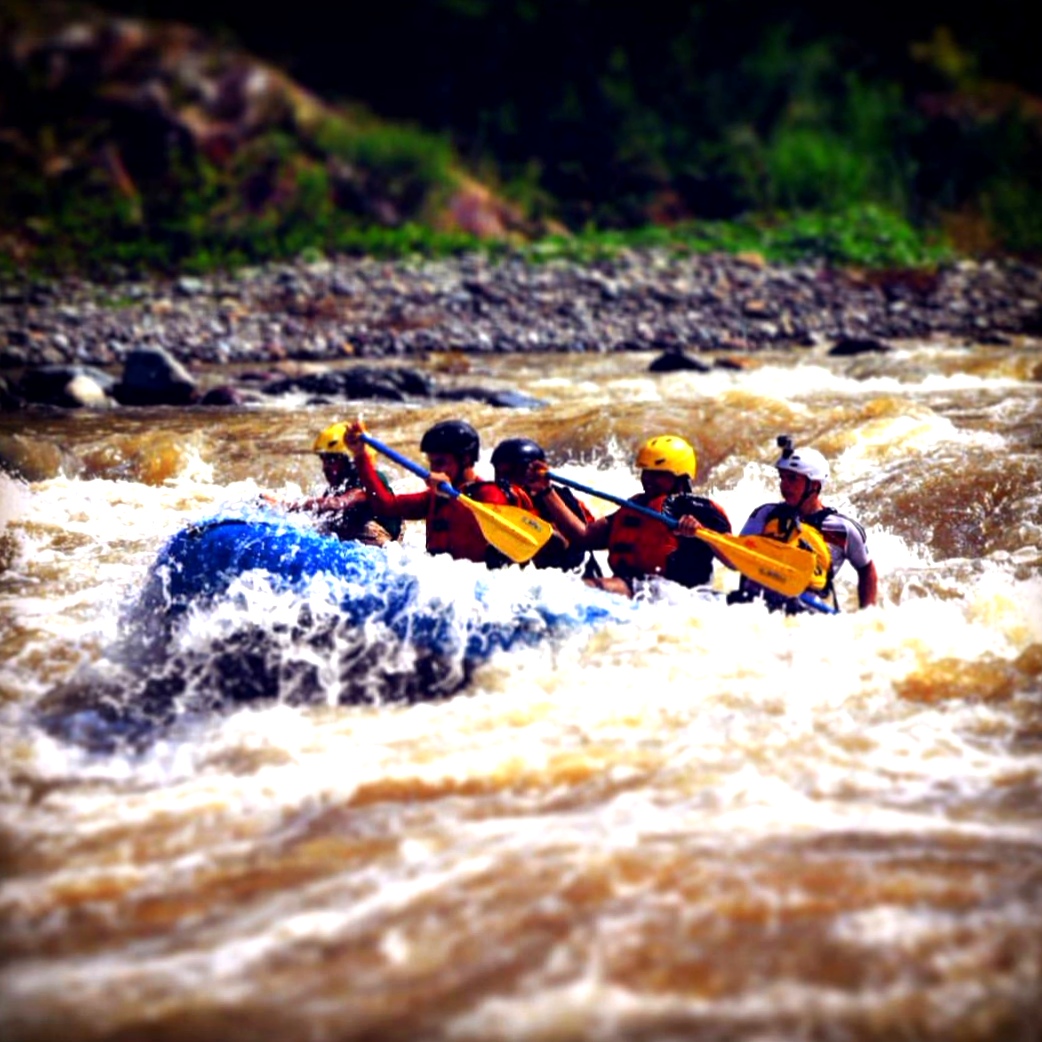
Turtle time in El Salvador
Arriving back in El Salvador at the crack of dawn and faced with a long layover we decide to head to the beach at Playa Pimentel a 50-minute drive from the airport. Being buffeted by the powerful breakers of the Pacific is a definite contrast to wallowing in the warm, crystal waters of the Cayos Cochinos but it makes for a refreshing start to the day. The relentless waves here are great for body surfing, but to experience the best of El Salvador’s world class surf it’s best to head to Surf City at El Tunco, or beaches like El Zonte, Las Flores and Punta Mango.
The beach goes on for miles and miles, much of it virgin, but at Hotel Estero y Mar I find a good beach bar to indulge my love of pupusas and tropical fruit juices. The hotel itself is a sprawling labyrinth of rooms set around a series of small swimming pools, with a small mangrove forest at the back you can explore by kayak.
Back at the beach some of the staff members from the hotel have brought out a large tub filled with Olive Ridley turtles that were rescued as eggs, placed in incubators and raised until strong enough to make their way out to sea.
A family of Salvadorians huddles around the leathery turtles, picking them out of the tub one by one and placing them gently on the sand. We watch the tiny creatures as they make their determined way into the surf, seemingly unphased by the vast journey ahead of them.
“They will come back here again, you know,” says Berta, the mother. “El Salvador is such a beautiful country that people who visit once will always return.”
After only nine days in El Salvador and Honduras, having experienced so many adventures, eaten so many amazing dishes, and met so many inspiring people, I can only agree with Berta. My Central American adventures have only just begun.
